Browning butter is a simple cooking technique that transforms everyday butter into a flavor factory. With just a few minutes of stovetop simmering, you can bring out nutty, toasted notes that take everyday recipes to the next level. Learn how to brown butter properly to make decadent brown butter cookies, cakes, pasta and more.
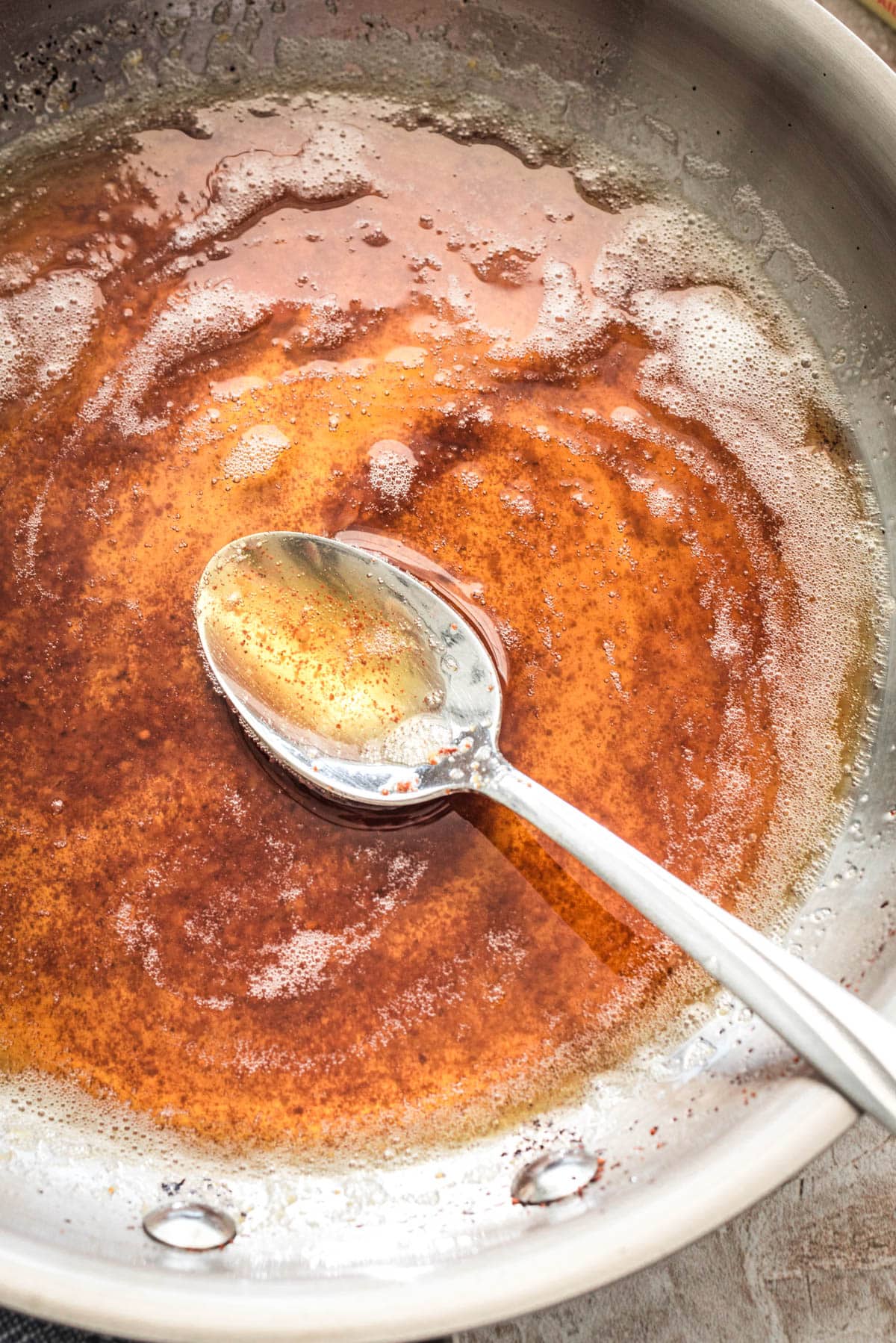
There's something magical about browned butter. In the realm of "simple tips to take your dishes to the next level," I think this one has to be WAY high up on the list. It's incredibly simple to do in just a few minutes, but this one-ingredient sauce makes a drastic difference for sweet and savory recipes alike. There's depth, richness, and nuttiness that is almost hard to believe you gain just from getting the butter a bit toasty in advance.
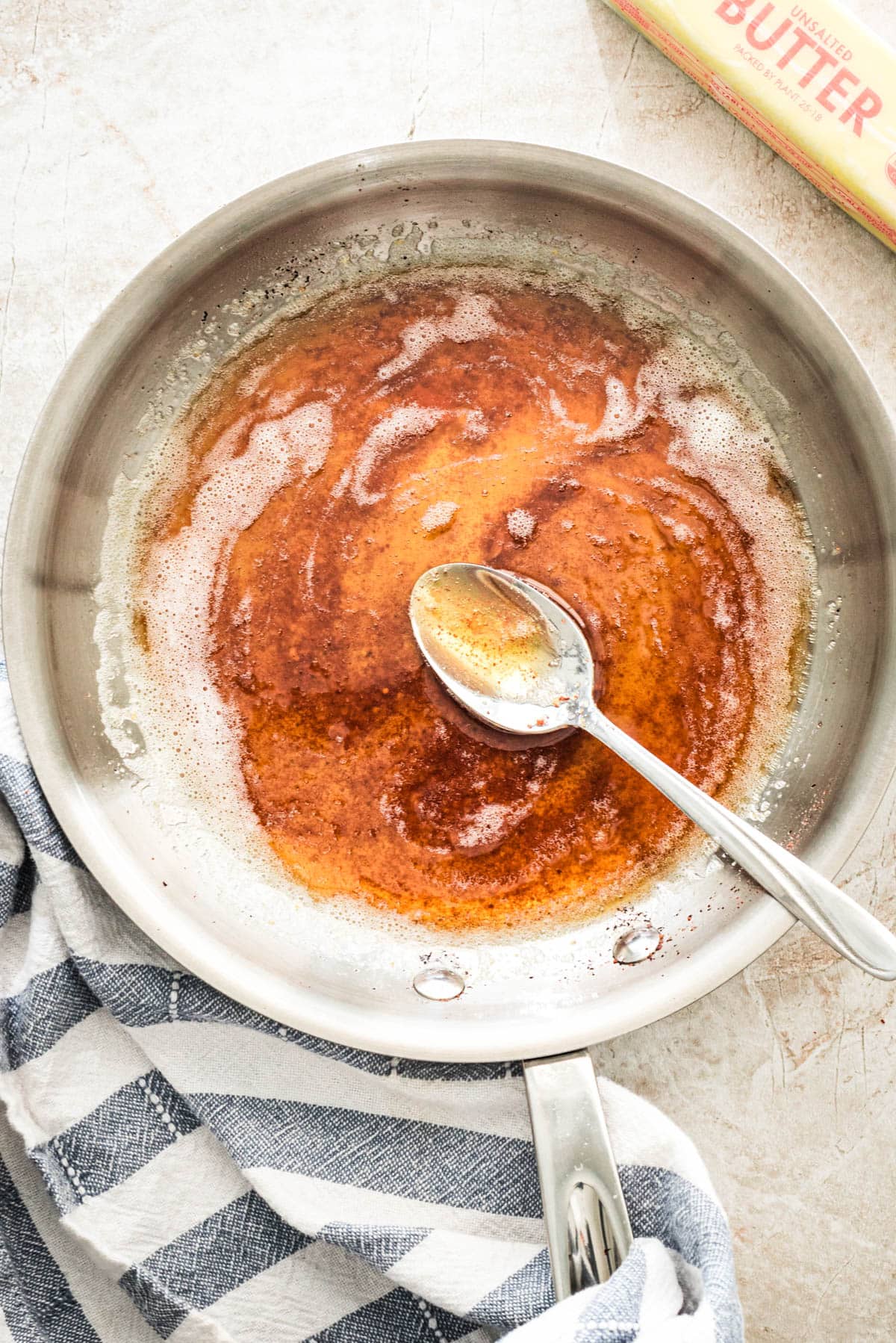
What is Brown Butter?
Brown butter, sometimes called browned butter or beurre noisette, is simply butter that has been melted and cooked until the milk solids begin to turn brown. This caramelization of the milk solids gives brown butter an intensely nutty and toasty flavor.
Regular melted butter has a rich, but one-dimensional flavor. Browning the butter adds complexity you just can't achieve without it. It's almost like a hint of rich hazelnut, which is exactly where the term "beurre noisette" comes from - noisette meaning "hazelnut" in French!

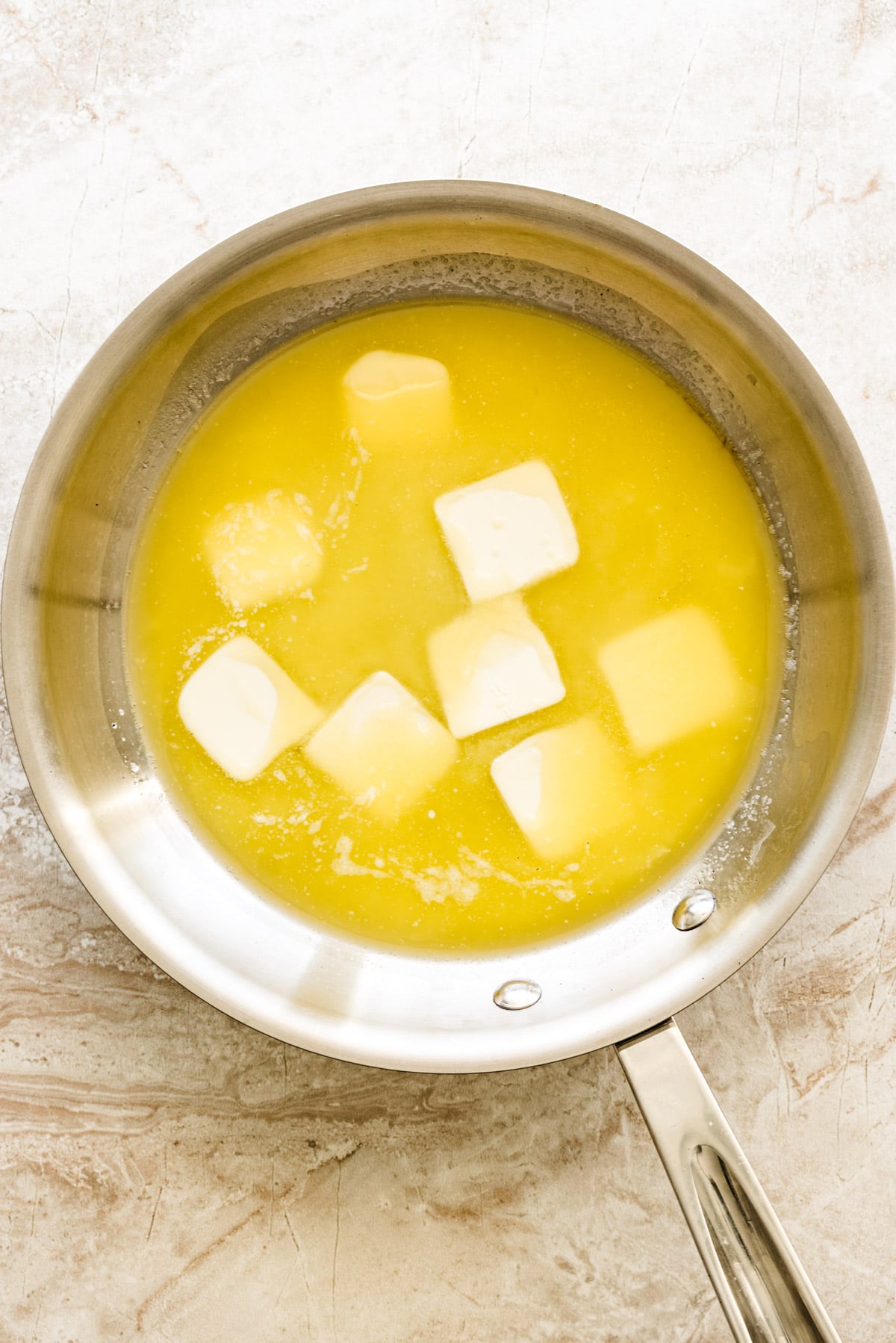
How it works
When you brown butter, there are two key processes occurring that really transform it into something special:
- The Maillard Reaction. As the milk solids in the butter cook, they undergo the Maillard reaction - the same chemical reaction that gives seared steaks and crusty bread their complex, browned flavors. This causes hundreds of new aroma and flavor compounds to develop, lending browned butter its signature toasted, nutty notes.
- Water Evaporation. Heating the butter causes some of its water content to evaporate away. This concentrates what's left into just the butterfat and flavorful browned milk solids, intensifying the butter's overall richness.
It's the duo of the Maillard browning reaction and water evaporation that gives browned butter significantly more depth when compared to regular melted butter. As the butter simmers and its color changes from bright, pale yellow to a golden light brown, you'll even be able to smell the difference.
The key is stopping the browning process at just the right point - when the butter is fragrant and lightly browned but before any burning occurs. This way, you'll get the maximum toasted, nutty flavor without any bitterness.
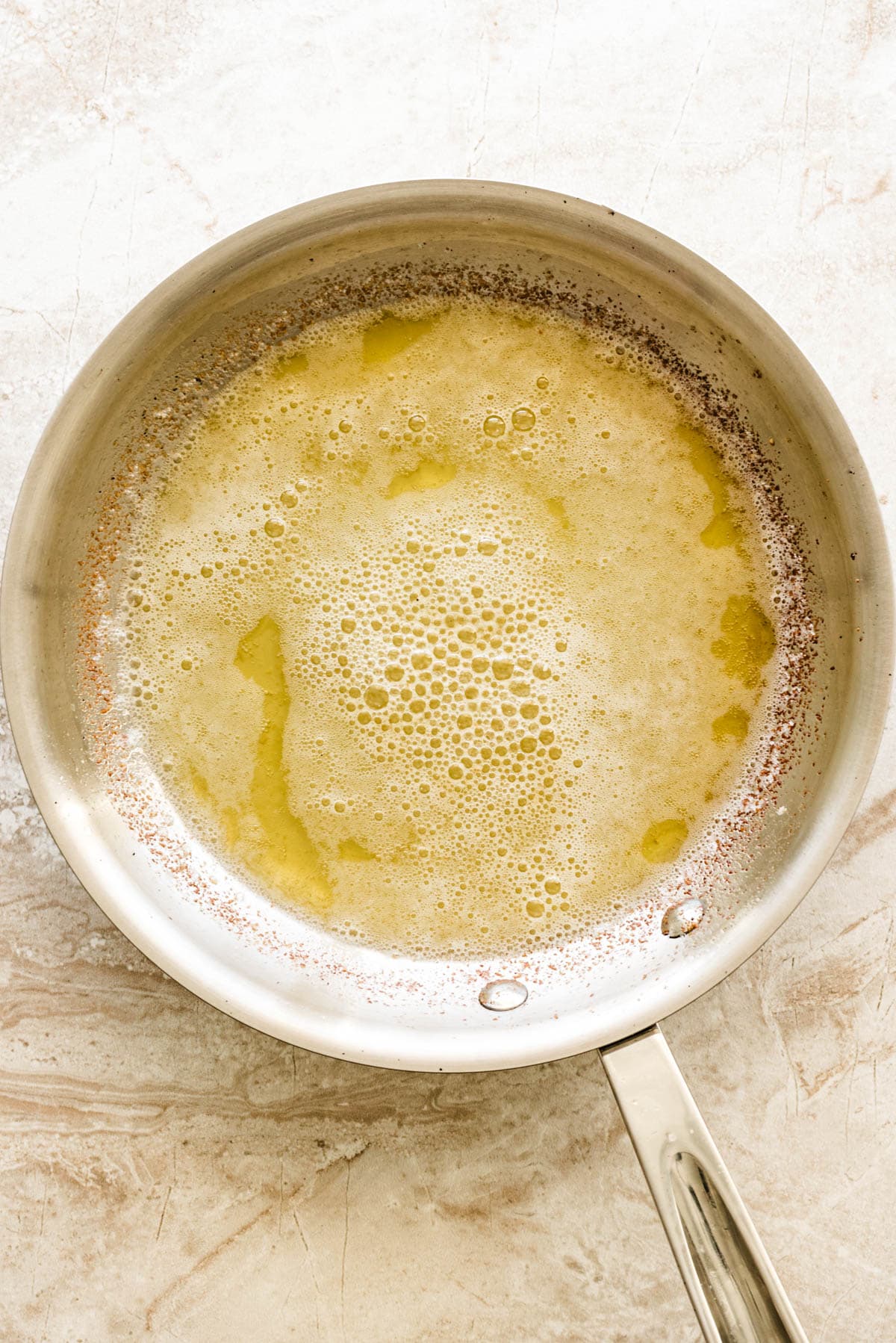
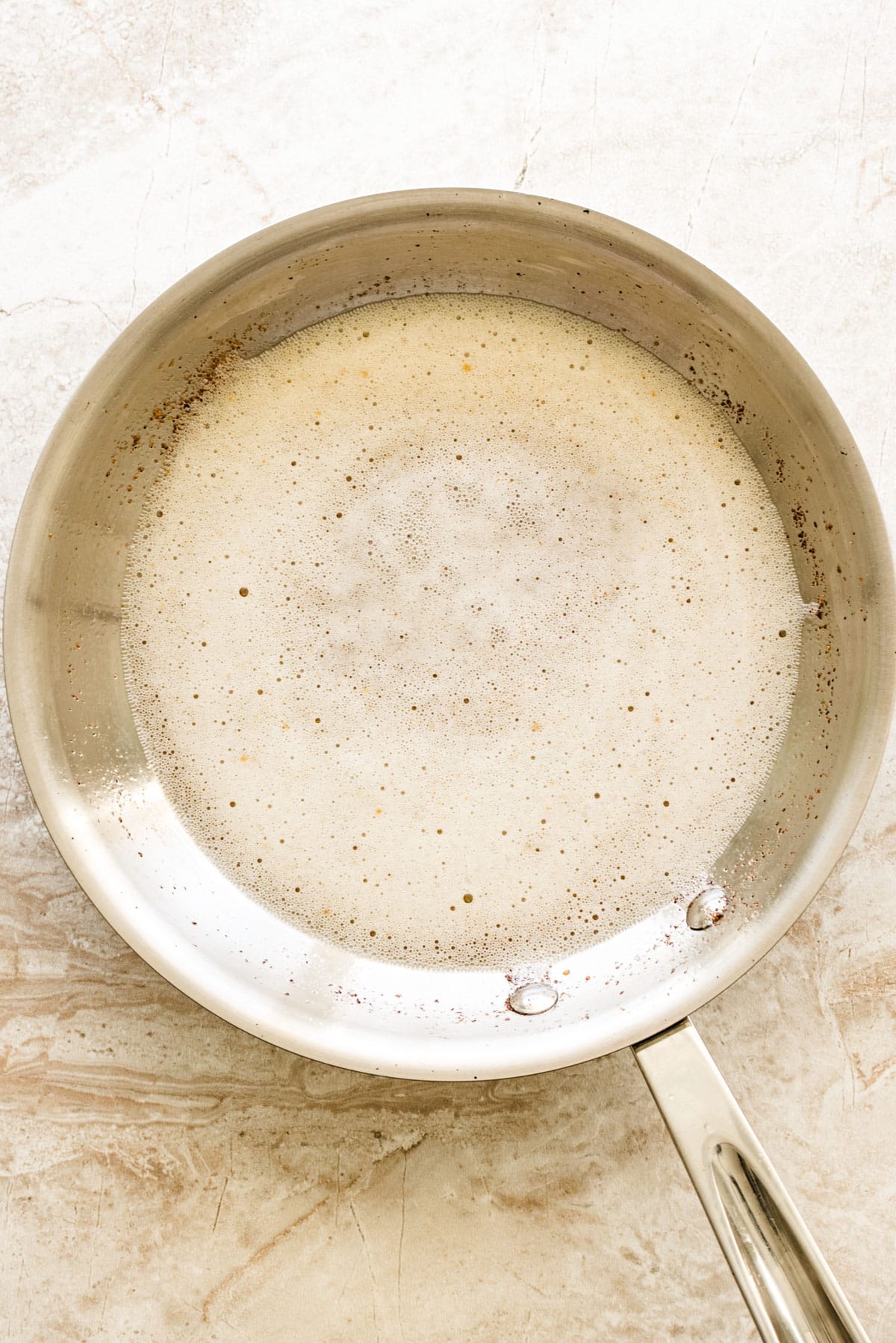
How to make Brown Butter
Browning butter is easy to do right on the stovetop with just a few simple steps:
- Melt the butter. Cut 1 stick of high-quality, unsalted butter into tablespoons and melt in a small skillet over medium heat. While you can technically use salted butter, it can cause salt to concentrate in the milk solids and is prone to burning, which messes with the final flavor. Similarly, browning more sticks of butter at once is doable, but you'll want to make sure you use a wide pan and stir constantly for best results.
- Get toasty. Cook the butter for a few minutes. The butter will foam and begin to lightly simmer as the milk solids caramelize. Keep a close eye on it to avoid burning.
- Take it off at the perfect time. Once the butter begins to smell like toasted nuts and visible light brown specks appear, remove it from heat. It's better to remove slightly early than too late, as the residual warmth in the butter will continue to cook the milk solids.
- Prepare to enjoy! Pour the browned butter into a heat-proof bowl, leaving any blackened milk solids in the pan. Let cool for a few minutes before using as desired.
Tips for browning butter successfully
Browning butter properly often takes a little practice, so don't be too hard on yourself if your first go at it isn't quite perfect. I've certainly burnt a batch or two before getting it right. But honestly, once you get the hang of it, it's such an easy technique. Here are some tips to help you achieve perfectly browned butter every time:
- Use high-quality butter - Lower quality butters and salted butters are more prone to burning, so opt for a good base for the best results.
- Don't just throw the stick in whole - Smaller pieces of butter encourage more even heat distribution, so resist the urge to melt the stick whole. Cut into tablespoons or smaller!
- Use a light-colored pan - Put that dark gray skillet away. Using a stainless steel or brightly colored pan will make it much easier to monitor the color as it evolves, so you'll be far less likely to burn the butter.
- Watch closely once the butter starts to foam - The milk solids can go from perfect to burnt quickly, so don't walk away once this stage begins. Once it starts to smell nutty and the brown bits become visible, it's ready to remove from the heat.
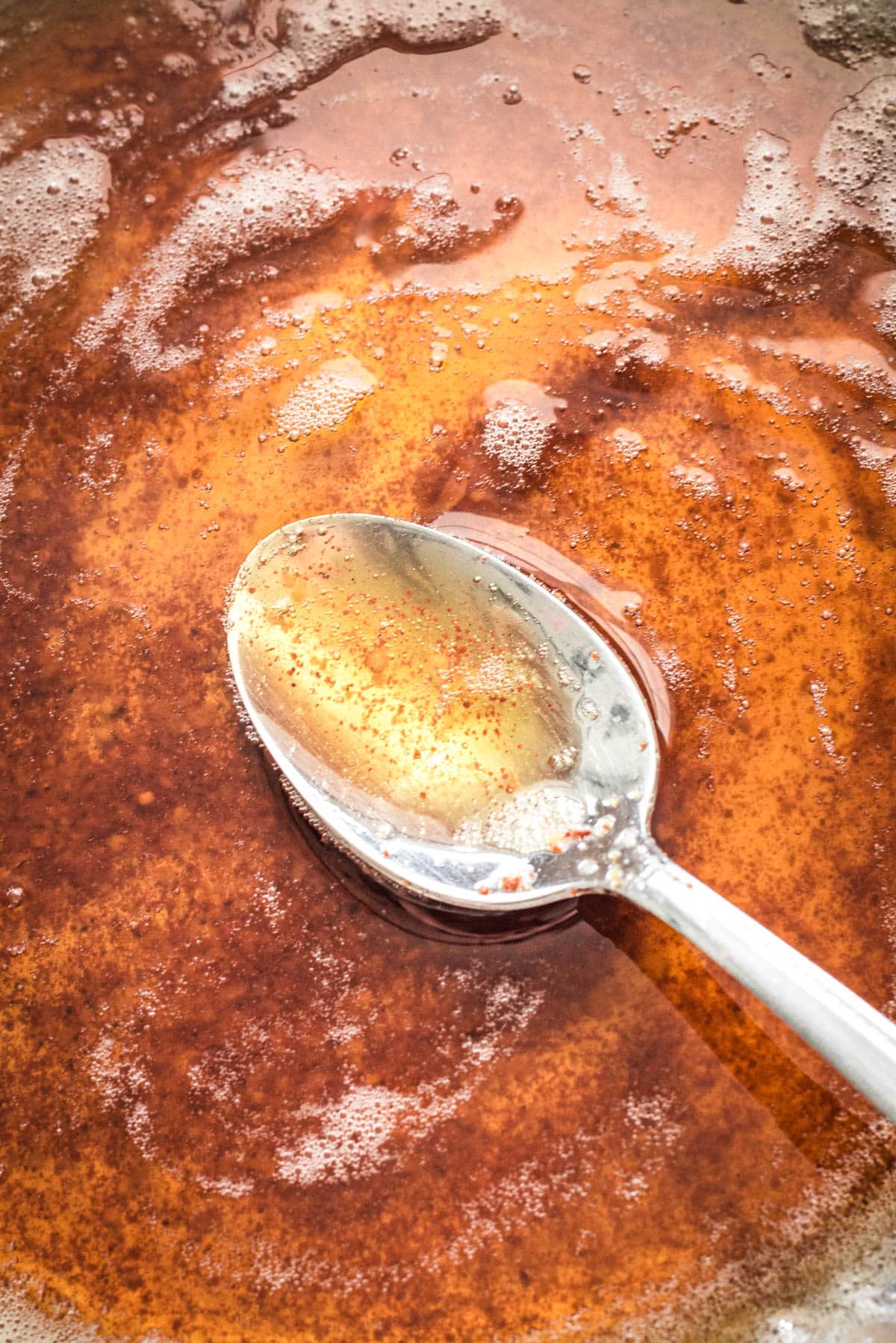
Accounting for moisture loss
The browning process causes some water to evaporate from the butter, resulting in less moisture by volume compared to regular melted butter. To compensate, simply start with a bit more butter than the recipe calls for.
For example, if a recipe requires ½ cup (1 stick) of melted butter, use 1 ¼ to 1 ½ sticks when browning. Melt and brown the extra butter, then measure out the ½ cup amount needed after straining out the browned milk solids.
Alternatively, you can replace some of the lost moisture by adding 1-2 tablespoons of milk or water when using the browned butter in a recipe.
Take it to the next level with toasted milk powder
Believe it or not, there actually is a way to make brown butter even better, and I swear by it for baked goods. All you have to do is stir a tablespoon or two of toasted milk powder into the browned butter.
To do it, toast ¼ cup milk powder in a dry skillet over medium heat. Cook, stirring frequently, until golden brown, which should take about 2 minutes. Immediately remove from heat and let cool. Then simply whisk 1-2 tablespoons of the toasted milk powder into your slightly cooled browned butter. Ta-da!
Because brown butter relies on toasted milk solids, toasting straight milk powder on its own and then adding those extra toasted milk solids to your butter gives you even more of that nutty, deep flavor. It's such a game changer for cookie dough, cake batter, frostings, muffins, and more. Anywhere that regular browned butter takes a baked good up a notch, toasted milk powder brown butter honestly launches it into the stratosphere.
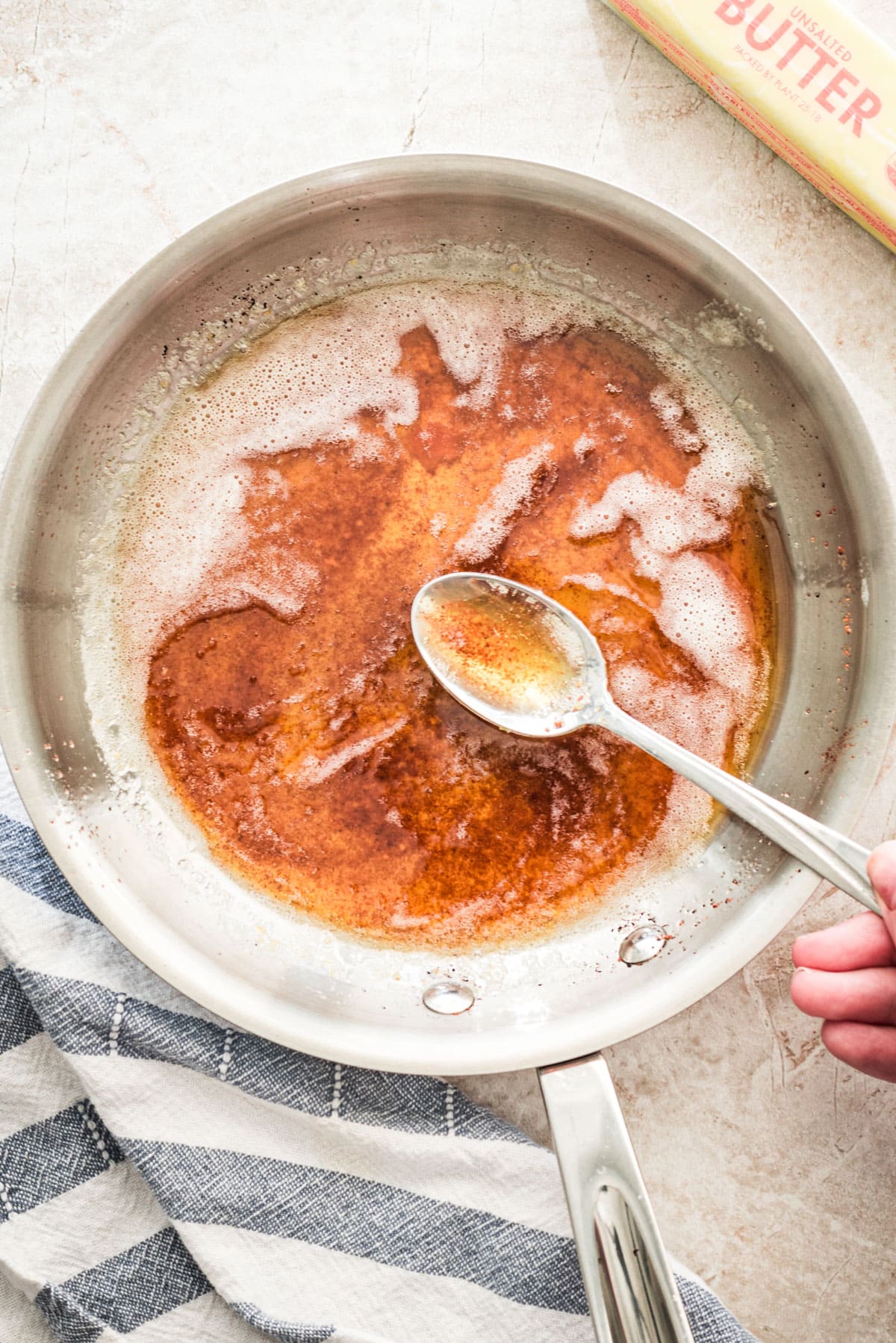
How to Brown Butter in the Microwave
Don't have an available burner or the right pan? You can actually brown butter in the microwave, if you prefer. Now, I'll tell you right off the bat that I think the stovetop method is better - the microwave method loves to send pops of butter all over the place if you don't do it perfectly, and it's harder to monitor the browning. However, I have done this from time to time, and it does work!
If using the microwave, you'll want to make sure you have a microwave safe bowl to brown the butter in, as well as some sort of microwave-safe heavy cover. Parchment paper also helps to prevent the butter from clinging to the lid.
Add your butter to the microwave, cover, and heat for 3 minutes. Then check your butter, and continue to microwave in 30 second intervals until light golden brown. The butter will be HOT so it will continue to brown slightly after taking it out. And because the butter is hot, make sure to use caution (and oven mits!) when removing it from the microwave.
Ways to use Brown Butter
Brown butter is delicious in any recipe that calls for a significant amount of standard butter, such as baked goods, vegetables, or even pasta sauces. Here are some of my favorite ways to use it:
- Mashed Potatoes. Add browned butter to your standard mashed potato recipe to amp up the flavor. I especially like using it in Mashed Sweet Potatoes or even Sweet Potato Casserole. It also is great for other mashed or pureed veggies like Mashed Cauliflower, bringing some nutty flavor to the mix.
- Drizzle over veggies. One of my favorite ways to serve greens is with a drizzle of brown butter and a squeeze of lemon. Take, for example, these Browned Butter Lemon-Garlic Green Beans. It's also great for broccoli, asparagus, and more.
- Use in baked goods. Instantly upgrade your cookies by using brown butter - I've been doing it lately and I'll share a series on it soon! It also makes a major difference in pies, like this Maple Bourbon Brown Butter Peach Pie, or glazes, like in these Maple Brown Butter Glazed Amish Apple Fry Pies! And brown butter in buttercream or cream cheese frosting? It's other-worldly.
- Toss with pasta. I love frying up sage until crispy in butter, letting the butter brown, and then adding back sage, parmesan, and pasta water for a simple brown butter sage pasta - I have a video of it over on Tiktok if you'd like to check it out! It's also great in recipes like Lemony Brown Butter Asparagus Penne!
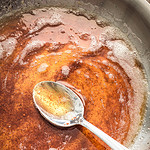
How to Brown Butter
- Total Time: 7 minutes
- Yield: ½ cup 1x
Ingredients
- 1 stick (8 tablespoons) unsalted butter
Instructions
- Melt the butter. Cut the stick of butter into tablespoon portions and place in a light-colored skillet or saucepan over medium heat. Allow the butter to melt completely.
- Let it brown. Continue cooking, stirring frequently with a heat-proof utensil, as the milk solids start to brown. This should take 3-5 minutes from the time the butter fully melts. Once the butter takes on a nutty aroma and turns a light golden brown color with flecks of toasted brown milk solids, immediately remove from heat.
- Get ready to use. Carefully pour the browned butter into a heat-proof bowl, leaving any blackened bits behind in the pan. Allow the browned butter to cool for 5 minutes before using in recipes. It can be stored in an airtight container in the fridge for up to 2 weeks.
Notes
For ultra-powered browned butter: Toast ¼ cup milk powder in a dry skillet over medium heat, stirring frequently, until golden brown. It should take 2-3 minutes. Once cooled, whisk 1-2 tablespoons into the slightly cooled browned butter before using in recipes.
To make brown butter in the microwave: Add sliced butter into a microwave-safe bowl - preferably a clear one so you can easily check on the amount of browning. Cover with a piece of parchment paper and a lid, heavy flat plate, or tight-fitting upside-down bowl. Microwave for 3 minutes, then check and continue to microwave in 30 second intervals until light golden brown. The butter will be VERY HOT and will continue to brown slightly as it cools. Be sure to use caution when removing the butter from the microwave - and don't try to grab the bowl with your bare hands!
- Prep Time: 2 minutes
- Cook Time: 5 minutes


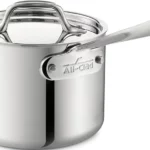
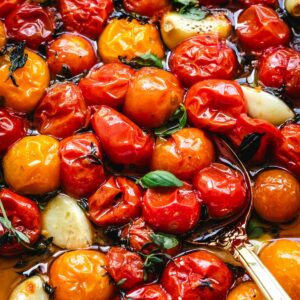
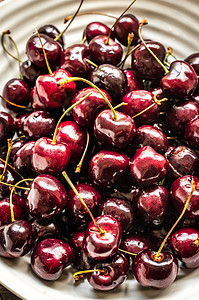
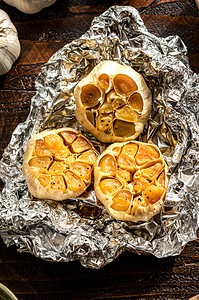


Leave a Reply